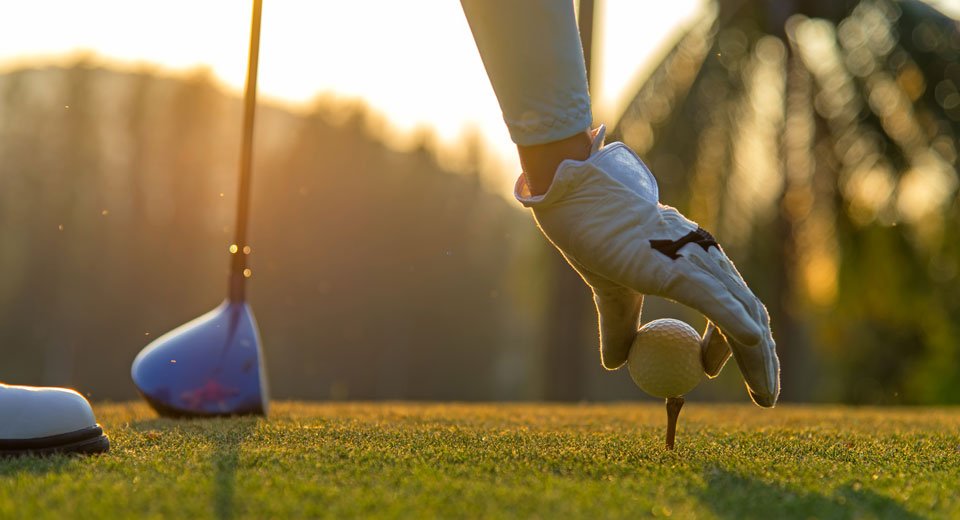Back in the swing of things

Sue Curran has been playing golf since she was five, but a few years ago the Centerville resident began developing a groan-inducing ache in her lower back after every round. And the pain didn’t stop there, often radiating down into her lower body, especially the left leg.
“On a scale of one to 10, the pain was an 11,” said Curran, 61.
Curran tried everything from acupuncture to Advil to ease the anguish, but nothing helped. A doctor suggested cortisone injections, but those failed, too. Then a surgeon in Boston, where Curran has a home, recommended spinal fusion, in which two vertebrae are bonded to form one bone. The surgery was scheduled, though Curran remained uncertain it was the right choice for her.
Finally, a fellow golfer at the Hyannisport Club, where Curran plays, suggested she consult another member: Paul Houle, MD, FAANS, a neurological surgeon at Cape Cod Hospital. After examining Curran, Dr. Houle recommended a different strategy: He would treat Curran with a procedure called a laminectomy, in which bone impinging on nerves and causing pain is removed, followed by the hospital’s Golf-Specific Rehab Program, a physical-therapy regimen designed specifically for golfers who have had back surgery.
Curran was quickly convinced that the surgery and rehab program were right for her.
“I loved it,” she said. “It seemed like the road to recovery.”
Just For Golfers
Dr. Houle developed the program for golfers recovering from back surgery with Catherine Hoell, PT, DPT, OCS, and orthopedic physical therapist with the Cape Cod Hospital Rehabilitation Center. Dr. Houle is a devoted golfer and Hoell knows a bit about the game, herself. Her handicap is an impressive six and she has won multiple championships at the public golf clubs in her town of Dennis, the Highlands and the Pines. She also holds a PhD degree in physical therapy.
Both Dr. Houle and Hoell are certified by the Titleist Performance Institute, a program launched by the equipment manufacturer to teach golf instructors and healthcare professionals the biomechanics of the golf swing. The goal: Help golfers perform at a high level, while staying healthy.
Many golfers struggle with back pain, including the most famous player in the world, Tiger Woods, who has had surgery on his spine four times, the most recent a spinal fusion. With more than three dozen golf courses on the Cape and South Coast, Dr. Houle and Hoell see plenty of players who have back problems.
“But a back injury isn’t always the problem, per se - sometimes it’s a symptom,” said Hoell. “Your back is hurting because another part of the body isn’t doing its job.”
That often means the hips or thorax (the area from the abdomen to neck), which in many golfers - both competitive and casual - lack flexibility, so the body compensates by straining the spine. The rehabilitation program Dr. Houle and Hoell created is designed to remedy these and other orthopedic problems that can lead to problems for golfers.
“Dr. Houle can fix a back injury, but if you then don’t follow it up with rehabilitation and get mobility in your hips and rib cage, you are going right back to the same problem,” said Hoell.
Strengthening the Core
Golfers usually begin the rehab program a few weeks after undergoing back surgery. Most attend two or three weekly sessions, which last 45 minutes. The program moves through three phases over the course of several months: First, Hoell guides the patient through exercises designed to promote healing and restore normal movement, and to begin building strength in the abdominal region, often called “the core.”
That work continues in the second phase, along with building strength and flexibility in other muscles and joints that play vital roles in the golf swing. In the final phase, the focus shifts to exercises aimed at improving performance - building the strength and flexibility needed to play better golf. When the program is complete, golfers gradually resume playing, a few swings at a time.
"We work with the whole spectrum of golfers,” said Hoell. “It doesn’t matter what level you play at. If you enjoy the game, we can get you back on the course.”
Sue Curran achieved that goal one beautiful day last fall, when she teed off at Hyannisport for the first time in months. And when she vacations in Florida this winter, she’s packing her clubs, eager to re-embrace the game she loves thanks to her surgery and hard work in the rehab program.
“It was an extraordinary experience,” said Curran. “I wish I’d done it sooner.”
